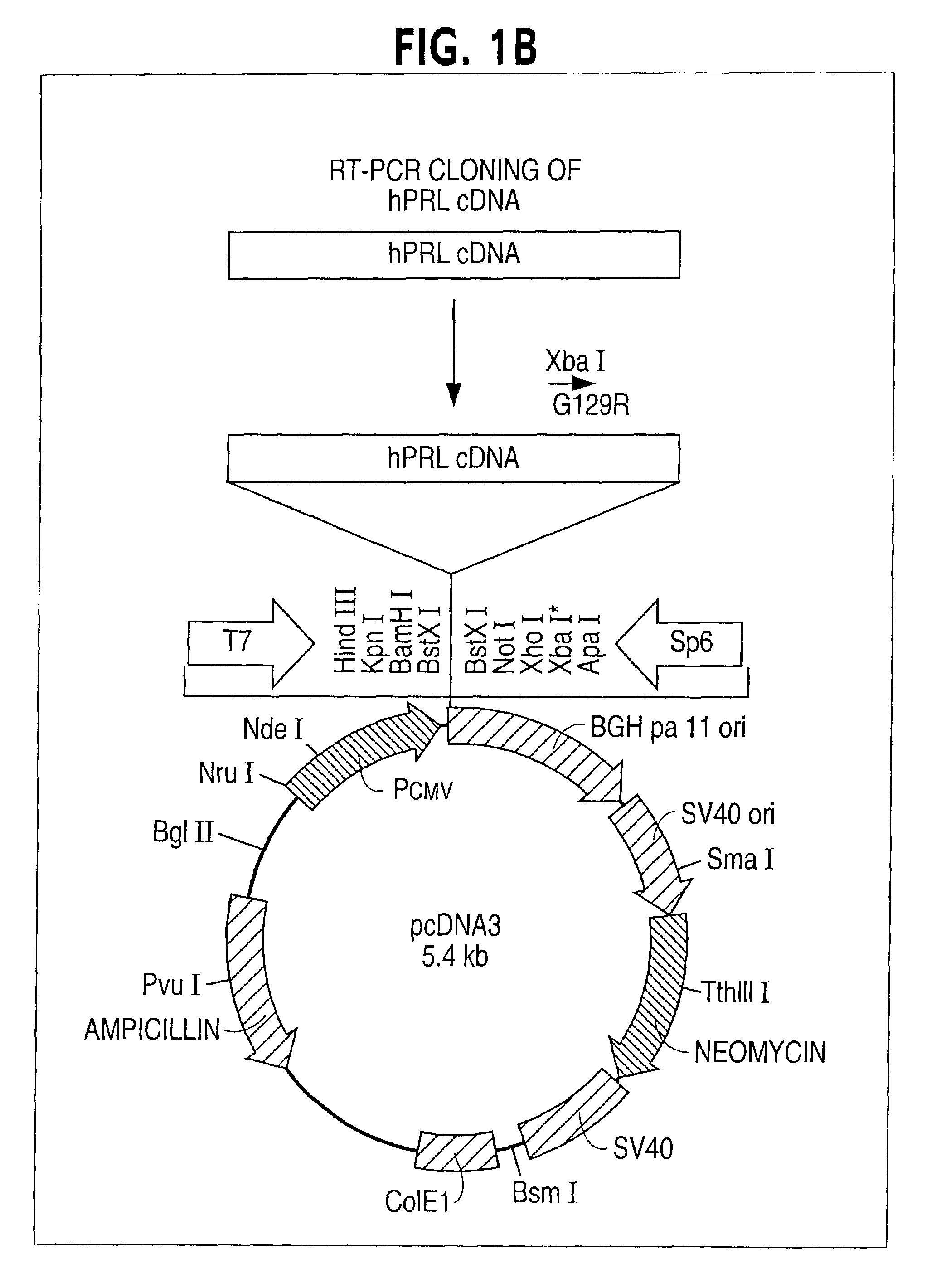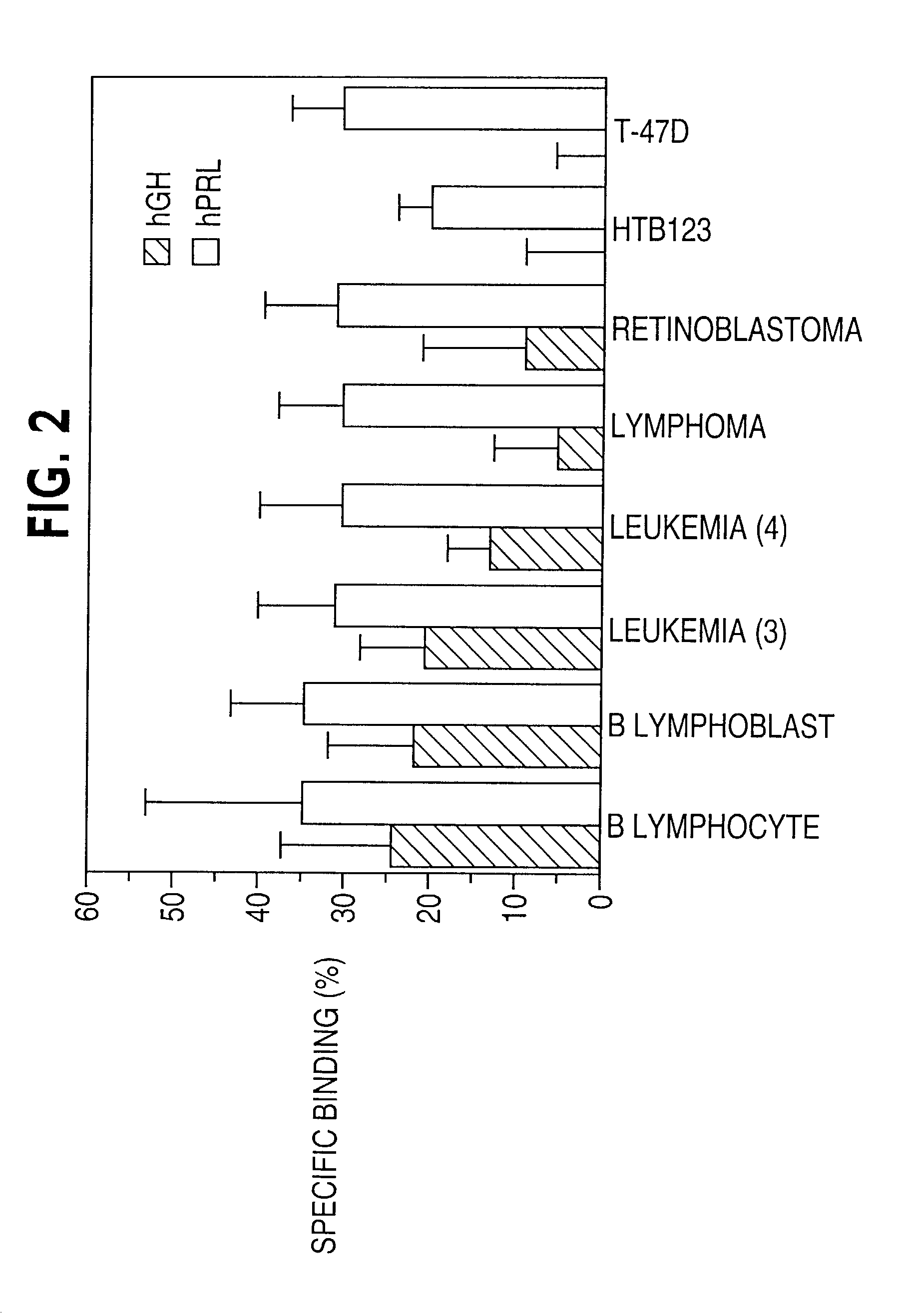Use of anti-prolactin agents to treat proliferative conditions
a technology of proliferative conditions and antiprolactin, which is applied in the direction of hormone peptides, drug compositions, peptide/protein ingredients, etc., can solve the problems that the therapy of reducing prl levels, such as hypophysectomy and bromocriptine administration, have not been successful in the treatment of breast cancer, and achieve synergistic inhibition of cellular proliferation
- Summary
- Abstract
- Description
- Claims
- Application Information
AI Technical Summary
Benefits of technology
Problems solved by technology
Method used
Image
Examples
Embodiment Construction
[0045]For purposes of clarity, and not by way of limitation, the detailed description of the invention is divided into the following subsections:[0046](i) prolactin variants;[0047](ii) truncated prolactin receptors; and[0048](iii) utility of the invention.
5.1. Prolactin Variants
[0049]The present invention provides for prolactin (PRL) variants which antagonize the action of PRL at its receptor.
[0050]The term prolactin (PRL) refers herein to human and nonhuman animal forms of the hormone prolactin. Such prolactins include, but are not limited to, pro lactins for which the amino acid sequences are set forth in FIG. 10 (see also Cooke et al., 1981, J. Biol. Chem. 256:4007; Cooke et al., 1980, J. Biol. Chem. 225:6502; Kohmoto et al., 1984, Eur. J. Biochem. 138:227; Tsubokawa et al., 1985, Int. J. Peptide Protein Res. 25:442; Bondar et al., 1991, GenBank Accession No. #X63235; Sasavage et al., 1982, J. Biol. Chem. 257:678; Miller et al., 1980, Endocrinol. 107:851; Li et al., 1970, Arch. B...
PUM
| Property | Measurement | Unit |
|---|---|---|
| pH | aaaaa | aaaaa |
| pH | aaaaa | aaaaa |
| temperature | aaaaa | aaaaa |
Abstract
Description
Claims
Application Information
 Login to View More
Login to View More - R&D
- Intellectual Property
- Life Sciences
- Materials
- Tech Scout
- Unparalleled Data Quality
- Higher Quality Content
- 60% Fewer Hallucinations
Browse by: Latest US Patents, China's latest patents, Technical Efficacy Thesaurus, Application Domain, Technology Topic, Popular Technical Reports.
© 2025 PatSnap. All rights reserved.Legal|Privacy policy|Modern Slavery Act Transparency Statement|Sitemap|About US| Contact US: help@patsnap.com



